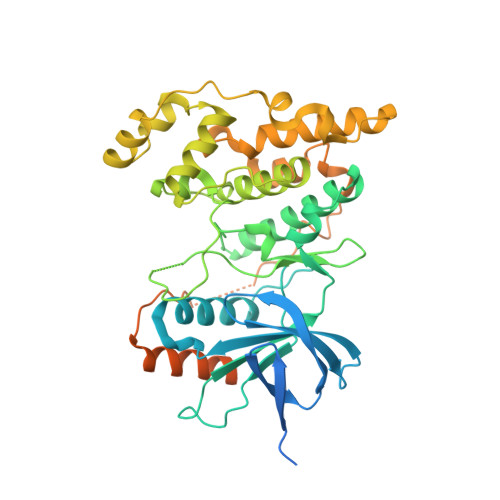N -Aromatic-Substituted Indazole Derivatives as Brain-Penetrant and Orally Bioavailable JNK3 Inhibitors.
Feng, Y., Park, H., Ryu, J.C., Yoon, S.O.(2021) ACS Med Chem Lett 12: 1546-1552
- PubMed: 34676036
- DOI: https://doi.org/10.1021/acsmedchemlett.1c00334
- Primary Citation of Related Structures:
7S1N - PubMed Abstract:
An indazole/aza-indazole scaffold was developed as a novel chemotype for JNK3 inhibition. Extensive structure activity relationship (SAR) studies utilizing various in vitro and in vivo assays led to potent and highly selective JNK3 inhibitors with good oral bioavailability and high brain penetration. One lead compound, 29 , was a potent and selective JNK3 inhibitor (IC 50 = 0.005 μM) that had significant inhibition (>80% at 1 μM) to only JNK3 and JNK2 in a panel profiling of 374 wild-type kinases, had high potency in functional cell-based assays, had high stability in the human liver microsome ( t 1/2 = 92 min), and was orally bioavailable and brain penetrant (brain/plasma ratio: 56%). The cocrystal structure of 29 in human JNK3 at a 2.1 Å resolution showed that indazole or aza-indazole-based JNK3 inhibitors demonstrated a type I kinase inhibition/binding.
- Reaction Biology Corporation, One Great Valley Parkway, Malvern, Pennsylvania 19355, United States.
Organizational Affiliation:

















